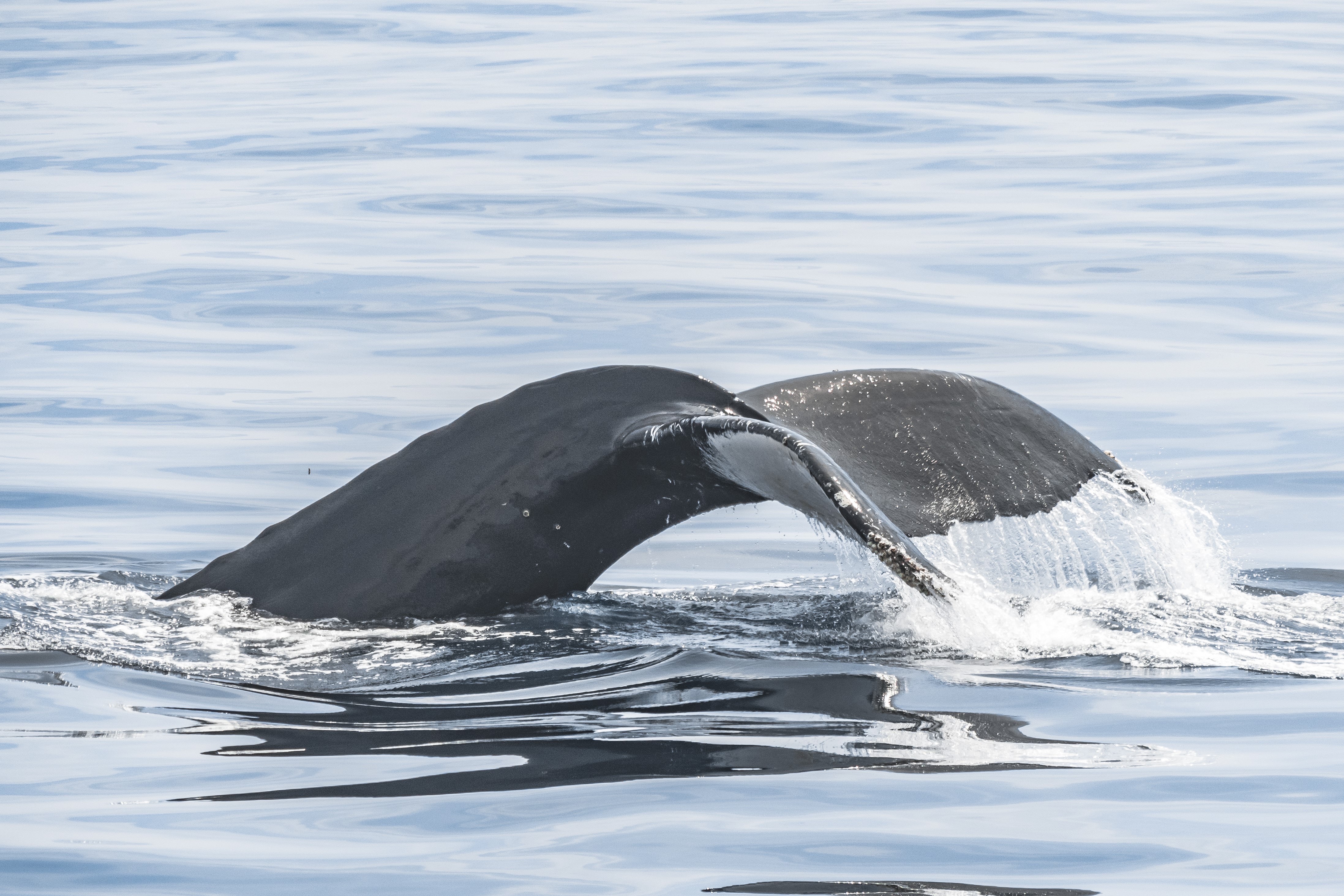Each year, gray whales make a 12,000-mile journey between the temperate climes of Baja California to their feeding grounds in the frigid waters of Alaska. During this trip, one of the longest migrations in the animal kingdom, they pass through the waters of the Santa Barbara coast.
On a sunny Friday afternoon aboard the Santa Barbara Sailing Center’s Double Dolphin (where, for the sake of transparency, I worked as a crewmember during the summers of my college years), with the hills of the Mesa in the background, we happen across one of these magnificent creatures. Passengers file back and forth from one side of the vessel to the other, trying to guess where the whale will emerge next. When it does, preceded by a spout of mist, murmurs float up from the crowd, and the sense of awe is shared by everyone from children to their parents.
These magnificent creatures can reach 45 feet in size, and seeing them on the ocean is an experience that’s difficult to grasp until you’ve seen it for yourself. Because they’re a particularly coastal species of whale, gray whales are easier to see out on the water than more elusive, deep-water whales. In Santa Barbara, gray whale migration season lasts from mid-February to mid-May, and opportunities to see these creatures up close and personal abound.
“Seeing these animals out in their natural habitat, up close and personal, is really something you have to experience yourself to fully appreciate,” says Skip Abed, the owner of the Santa Barbara Sailing Center. “It’s a great way to get out on the water and appreciate the beauty of what we have here in Santa Barbara.”
Out on the Double Dolphin, Shirley Johnson, a volunteer from NOAA who provides passengers with information about the sea life they come across, says the trips are also a way to promote education and awareness. “Santa Barbara is a unique place because of the diversity of its marine life,” says Johnson, who has been volunteering on such trips since 2006. “It’s great for people to come see for themselves. If you don’t know about it, how can you love it? And if you can’t love it, how can you protect it?”
On top of the wildlife, being out on the water is a great way to see the natural beauty of Santa Barbara from a different perspective than you get on land. “The contrast of the mountains and the ocean is really beautiful,” says Katie Cassity, who is visiting from Salt Lake City. “It’s cool we saw a few whales. They make you feel so small!”
Out on the water, we also come across huge pods of dolphins, who playfully surf the wake of the boat, much to the passenger’s delight. “Things got litty,” says Anthony Spann, a student from Chapman (yes, he’s in a frat) out with his girlfriend, Lisa, for Valentine’s Day.
With an abundance of whale-watching opportunities, it’s easy to forget that the ecosystem is a fragile thing. At one point, due to the excesses of a rapacious whaling industry, gray whales came close to annihilation. But thanks to conservation efforts and protective laws, the gray whale was removed from the endangered species list in 1994.
Now, Coal Oil Point functions as an observation point for Gray Whale Count, a nonprofit made of volunteers who keep an eye out for the massive creatures as they lumber northward. They then use that information to keep track of the numbers of whales making the trip each year. The global population is estimated to be between 24,000-26,000.
Dana Johnson, who has been a captain on the Double Dolphin for years, said that the trips, on top of being fun, are a positive way for people to connect with the natural beauty of the ecosystem right in their backyard. On our way back to the harbor, Johnson and his crew stopped the boat to fish a wayward balloon out of the ocean. “Don’t let this be you, folks. Throw away your balloons!” he said over the loudspeaker. It’s a subtle reminder of our collective responsibility as stewards of the ocean that gives our community more than we can repay. “See it, experience it, feel the environment out here,” said Johnson. “Connect with what a special thing we have here, and do your part to protect it.”




